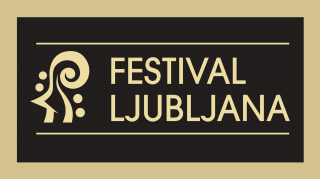Opening of the exhibition: 15. 7. 2022 at 12.00 pm, Knights’ Hall, Križanke.
Participants:
Noriaki Sangawa, Japan
Ana Grubić, Croatia
Enzo Valentinuz, Italy
Ute Aschbacher, Austria, France
Milena Gregorčič, Slovenia
Peter Ciuha, Slovenia
Franko Vecchiet, Slovenia, Italia
Ana Žerjal, Slovenia
The International Fine Arts Colony is celebrating its twenty-fifth anniversary this year, which means that Ljubljana has so far hosted almost two hundred visual artists from different parts of the world. It feels as though it only was yesterday when in autumn 1997 the director Darko Brlek and I were discussing the festival that had just finished. When he expressed his regret that all this wonderful music would never be heard again, I casually suggested he should invite visual artists to depict how they experience and feel music, thereby enriching the festival with artistic language. He found the idea interesting, and it was turned into reality the following year. Every year I thus invite eight professional visual artists to come to Ljubljana, half of them from Slovenia and half from abroad. The painters spend a week here in the middle of the festival. They are based in Plečnik’s Križanke, where they transfer their experience of various events onto canvas. However, in the past two years the pandemic made organising any cultural event very difficult, and now for artists this war in Europe is a serious creative trauma, especially from a moral point of view.
Although it is unlikely that any artist would actually welcome them, wars have unfortunately proven to be very important for artistic creativity in the course of history. What exactly is peace? An idealised period of time to which we constantly aspire, and which we have never properly determined or defined. We do not know if this is just a hypothetical state in our minds, or whether it is a socio-political, social or economic category. And finally – do we even want peace, or are we just pretending it’s possible?
Our attitudes to the relationship between war and peace have in recent centuries been the result of a kind of inherited avoidance and hypocrisy. On the one hand we are convinced that the desire implanted in our consciousness to live in peace is a kind of sociological, humanistic, civil and cultural right – our cultural tradition persuading us that almost everyone has the right to demand it for themselves, but on the other hand we are constantly at war or at least arming ourselves and getting ready it. The fact is that we are not ready for peace, and I am increasingly inclined to believe that the claimed aversion to war in our culture is based above all on moral and emotional paradigms, and thus primarily rhetorical. Events, particularly in the past decade, persuade me that wars are a crucial part of the system that maintains a kind of stability and control, either economic or political, so they are a conditio sine qua non from a sociological and economic point of view. We evidently cannot and do not want to avoid war.
If I recall the years I spent teaching art history at the Slovenian and Italian grammar schools in Koper, explaining various artistic achievements throughout the history of human creativity, I can only realise with horror that most of the artworks I mentioned and described were either created during a war or were dedicated to one, and so had a connection with war or violence of some sort, regardless of whether it was a national, social, religious or moral conflict.
I may therefore assume that regardless of when an artwork was created and the artist’s technique, one of the fundamental questions connected with the creation of an artwork is whether the basic motivation is oriented towards war or not.
Despite all I have said, I am convinced that even in the time of hypothetical peace, creative art is not condemned to extinction, and that nowadays more than ever before an anti-war sentiment is a new creative incentive for artists, a new aesthetics based on the negation of conflict, this stimulus that artists evidently needed to be able to talk about peace.
I believe this will be even more evident this year, and that works of art will be created in the wonderful setting of Plečnik’s Križanke that will proclaim the joy we are now in even greater need of if we are to be able to move into the future with optimism.
Eight artists will meet this challenge this year. Ute Aschbacher will come from Austria, Noriaki Sangawa from Japan, Enzo Valentnuz from Italy, Ana Grubić from Croatia, and the following from Slovenia: Milena Gregorčič, Ana Žerjal, Franko Vecchiet and Peter Ciuha. Once again this year, we will be joined by the well-known multimedia artist Lado Jakša, who will be with us for the entire week. At the opening of the exhibition that concludes the fine arts colony, he will use his own artistic vision to provide a musical and visual presentation of the participating artists’ work.
Each year the colony ends with an exhibition in the Križanke Knights’ Hall, where all the works are put on display. Every artist then donates one work of art to the permanent exhibition of modern art owned by Ljubljana Festival.
I wish the artists much creative inspiration and pleasant socialising, and that Ljubljana will enchant this year’s artists as much as it has their predecessors.
Tomo Vran
Selector


